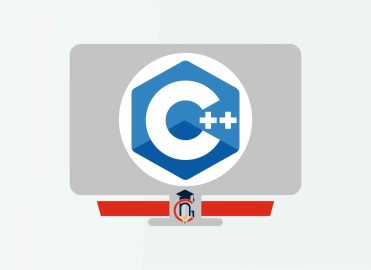Cyber Security Expert Course
| Training Mode | Regular | Fastrack | Crash |
|---|---|---|---|
| Classroom | Online | 12 Months (M,W,F or T,T,S Class) (3 Class in a week) |
6 Months (Monday to Friday Class) (5 Class in a week) |
4 Months (Monday to Friday Class) (5 Class in a week 1:30 hour duration) |
Introduction to Cybercrime
• Definition and History
• Cybercrime and Information Security
• Who are Cybercriminals and their classifications
• The Legal Perspectives
• An Indian Perspective
• Cybercrime and the Indian IT Act 2000
• A Global Perspective on Cybercrimes
• Survival for the Netizens
• Concluding Remarks and Way Forward to Further Chapters
Cyber Offenses
• How Criminals Plan the Attacks
• Social Engineering
• Cyberstalking
• Cybercafe and Cybercrimes
• Botnets
• Attack Vector
• Cloud Computing
Cybercrime and Wireless Devices
• Proliferation of Mobile and Wireless Devices
• Trends in Mobility
• Credit Card Frauds in Mobile and Wireless Computing Era
• Security Challenges Posed by Mobile Devices
• Registry Settings for Mobile Devices
• Authentication Service Security
• Attacks on Mobile/Cell Phones
• Security Implications for Organizations
• Organizational Measures for Handling Mobile
• Organizational Security Policies and Measures in Mobile Computing Era
• Laptops
Tools and Methods Used in Cybercrime
• Proxy Servers and Anonymizers
• Phishing
• Password Cracking
• Keyloggers and Spywares
• Virus and Worms
• Trojan Horses and Backdoors
• Steganography
• DoS and DDoS Attacks
• SQL Injection
• Buffer Overflow
• Attacks on Wireless Networks
Phishing and Identity Theft
• Phishing
• Identity Theft (ID Theft)
The Legal Perspectives
• Cybercrime and the Legal Landscape around the World
• Cyberlaws in India
• The Indian IT Act
• Challenges to Indian Law and Cybercrime Scenario in India
• Consequences of Not Addressing the Weakness in Information Technology Act
• Digital Signatures and the Indian IT Act
• Amendments to the Indian IT Act
• Cybercrime and Punishment
Computer Forensics
• Historical Background of Cyber Forensics
• Digital Forensics Science
• The Need for Computer Forensics
• Cyber Forensics and Digital Evidence
• Forensics Analysis of E-Mail
• Digital Forensics Life Cycle
• Chain of Custody Concept
• Network Forensics
• Approaching a Computer Forensics Investigation
• Setting up a Computer Forensics Laboratory
• Computer Forensics and Steganography
• Relevance of the OSI 7 Layer Model to Computer Forensics
• Forensics and Social Networking Sites
• Computer Forensics from Compliance Perspective
• Challenges in Computer Forensics
• Special Tools and Techniques
• Forensics Auditing
• Anti Forensics
Forensics of Hand-Held Devices
• Understanding Cell Phone Working Characteristics
• Hand-Held Devices and Digital Forensics
• Toolkits for Hand-Held Device Forensics
• Forensics of iPods and Digital Music Devices
• An Illustration on Real Life Use of Forensics
• Techno-Legal Challenges with Evidence from Hand-Held Devices
• Organizational Guidelines on Cell Phone Forensics
Cybersecurity and Organizations
• Cost of Cybercrimes and IPR Issues
• Web Threats for Organizations
• Security and Privacy Implications from Cloud Computing
• Social Media Marketing
• Social Computing and the Associated Challenges for Organizations
• Protecting People’s Privacy in the Organization
• Organizational Guidelines for Internet Usage
Safe Computing Guidelines and Computer Usage Policy
• Incident Handling
• Forensics Best Practices for Organizations
• Media and Asset Protection
• Importance of Endpoint Security in Organizations
Cybercrime and Cyberterrorism
• Intellectual Property in the Cyberspace
• The Ethical Dimension of Cybercrimes
• The Psychology, Mindset and Skills of Hackers and Other Cybercriminals
• Sociology of Cybercriminals
• Information Warfare
Cybercrime Case Study
• Real-Life Examples
• Mini-Cases
• Illustrations of Financial Frauds in Cyber Domain
• Digital Signature-Related Crime Scenarios
• Digital Forensics Case Illustrations
• Online Scams
Contact Us
Course Feedback
Student Projects
-
.png)
Name : Manish Bharti
Course : Web Designer
Project : Mindx
Guided By : Rajesh Sir
-

Name : Manish Bharti
Course : Web Designer
Project : Light Basket
Guided By : Rajesh Sir
-

Name : Sakesh Kumar
Course : Web Development
Project : Delhi Hospital
Guided By : Rajesh Sir
-

Name : Vikash Kumar
Course : Full Stack Developer
Project : PS Health Care
Guided By : Rajesh Sir
-

Name : Bablu Kumar
Course : Web Developer
Project : Mudra Cash for Gold
Guided By : Rajesh Sir
-

Name : Manish Bharti
Course : Web Designer
Project : vedicessentials
Guided By : Rajesh Sir
-

Name : Guddu Kumar
Course : Advance Full Stack Developer Expert
Project : MPSswitches
Guided By : Rajesh Sir
-

Name : Guddu Kumar
Course : Advance Full Stack Developer Expert
Project : Palco
Guided By : Rajesh Sir










